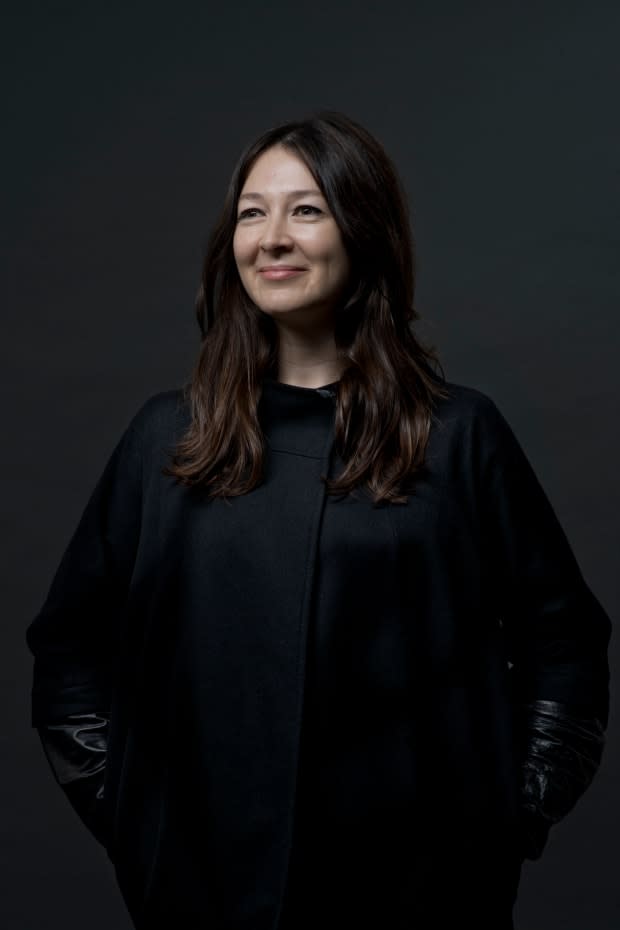The United Nations Partnered With an Irish Designer for London Fashion Week
The collection celebrates "the 25th anniversary of women's reproductive rights becoming a fundamental right."

It isn't every day that a fashion designer is approached by the United Nations to partner on a collection, but in May 2018, it happened: At the #WearingIrish trade fair in New York, someone at the United Nations Population Fund spotted the work of Natalie B. Coleman and knew there was potential.
Months later, following a protracted process, Coleman's Fall 2019 presentation at London Fashion Week is in association with the United Nations Population Fund and the UN Sexual and Reproductive Health Agency, to commemorate the 25th anniversary of the International Conference on Population and Development. The event saw sexual and reproductive health become a fundamental human right, matters dear to Coleman's heart.
"It's an incredible opportunity for me to partner with the United Nations Population Fund. They contacted me after [the showcase] to see if I'd be interested in collaborating with them to celebrate the 25th anniversary of women's reproductive rights becoming a fundamental right," Coleman tells Fashionista.
Coleman is from Donaghmoyne, Co. Monaghan, a rural parish with a population of around 2,700. She studied Fashion at the Limerick School of Art & Design in Ireland before pursuing the womenswear masters degree at Central Saint Martins under the tutelage of Professor Louise Wilson OBE, who trained many of today's brightest stars, like Christopher Kane and Simone Rocha. Coleman left the program after one year to start her eponymous label soon after her return to Ireland. These days, Coleman is a student at Trinity College Dublin where she is enrolled in the Master of Philosophy program for Gender and Women’s Studies.
"I wanted to have a stronger context behind my work," she says. "I learned about the idea of the clitoris 'vanishing' in various literal and figurative ways: from female genital mutilation to the erasure of female power, from the loss of childhood to the deletion of 'clitoris' from anatomical textbooks."
Coleman herself is no stranger to collaborative work with various organizations. Her previous collections have spotlighted initiatives such as Homeless Period Ireland, a project providing homeless women and women in crisis with sanitary products, and Plan International's Because I Am a Girl campaign, fostering change for equality.
"The more I look into things, it's scary to think how women are treated," Coleman continues. "From the minimization of female sexuality to women not being valued beyond their reproductive value, [the collaboration] is an opportunity for fashion to raise awareness about these issues."
Coleman will take her vision to London Fashion Week on Feb. 17. "The collection is called 'SISTERS' and we thought it was important to emphasize sisterhood, in the current climate, and its collaborative power, mobilizing women in order to create social change," she says. "It's very exciting; fashion is a powerful tool which can be used to influence the wider world and I hope there will be a wider impact with this."
The collection features references to child brides, and Coleman found influence in old wedding dresses; she hopes the collection will honor women affected by injustice. The methods she's employing — Carrickmacross lace, which took 32 hours to stitch one ovary motif, intricate beadwork, embroidery, French knotting and hand-knitting — are "techniques women have been using for generations to have equity in society," according to Coleman.
"These were techniques I once considered to be painstaking but I realized they were evocative of the emotion behind the collaboration; these crafts are unique to these women and it's important to continue to highlight them," she explains.
The mainline is supported by a capsule collection of printed scarves, hoodies, sweaters and T- shirts, all sustainably and ethically produced in organic cottons; everything is made in Coleman's Dublin studio. The accompanying casual line will feature various graphics which reference the vagina.

"I wanted it to be more sophisticated than graphic, so we looked at the Latin meaning of vagina, which is sword bearer, and that fed into the motif for the scarves we'll be doing," she says. "It's a way for me to use that emblem as a crest and reclaim something." The scarves feature different geometric patterns that resemble medieval scabbards.
As for the charitable contribution? Ten percent of the profits made from the collection will go directly to the UNFPA. Coleman is emphatic about igniting change with her projects and wishes to see a change in the fashion industry, too.
"I think the industry has a responsibility to change the nature of how it works," she says. "The stories have to change; it's predominantly male voices at the head of the most powerful companies. Fashion needs to be more inclusive and respond to how the world looks today, because the current approach is quite dated."
Never miss the latest fashion industry news. Sign up for the Fashionista daily newsletter.